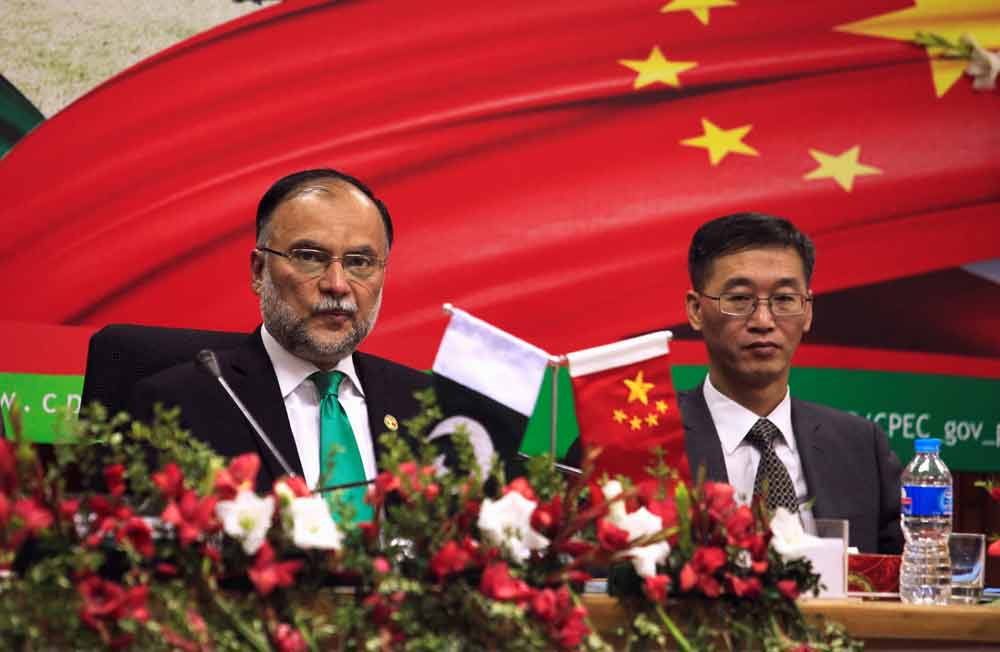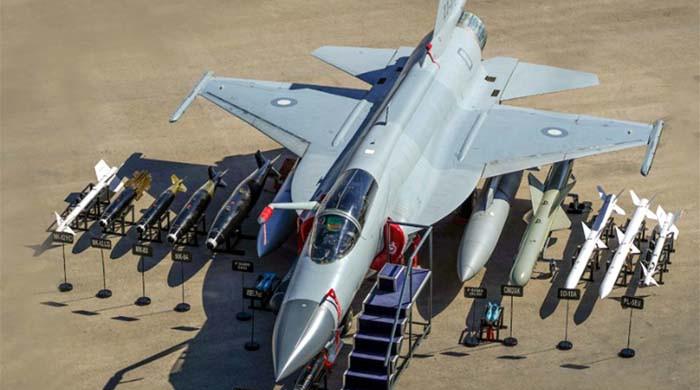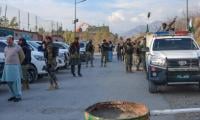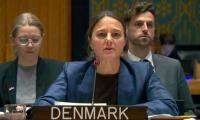CPEC Long-Term Plan: Complete document
Federal Minister for Planning, Development and Reform Ahsan Iqbal and Chinese Ambassador to Pakistan Yao Jing termed the launching of the LTP an historic landmark in Pak-China friendship.
ISLAMABAD: Pakistan on Monday released much-awaited Long-Term Plan of China-Pakistan Economic Corridor (CPEC), envisaging industrialisation between 2017 and 2030.
Federal Minister for Planning, Development and Reform Ahsan Iqbal and Chinese Ambassador to Pakistan Yao Jing termed the launching of the LTP an historic landmark in Pak-China friendship.
Addressing the event, Iqbal said, “launching of Long-Term Plan of CPEC will turn the China-Pakistan bilateral relations into long term strategic economic partnership.”
Salient features of the CPEC Long-Term Plan.
Construction of an integrated transport system
Transport infrastructure is the basic and prerequisite condition for the construction of the CPEC. It is an important field that can be relied on to guide and drive the economic and social development of regions along the CPEC, besides promoting the inter-connectivity and all-round cooperation between China and Pakistan for shared prosperity.
Through the joint planning and development of highways, railways, ports, aviation and other infrastructure, a convenient, efficient and integrated transport corridor that includes a variety of modes of transport can be formed, mainly drawing from Monographic Study on Transport Planning, to achieve the transition from lagging behind to adaptation and then to moderate advancement in the transport infrastructure of the main nodes along the CPEC. In order to meet the needs of trade and personnel exchanges between China and Pakistan for the socio-economic development of regions along the CPEC, following initiatives have been planned to achieve the aforementioned objectives.
Construction and development of Kashgar-lslamabad, Peshawar-Islamabad-Karachi, Sukkur-Gwadar Port and Dera Ismail Khan-Quetta-Sohrab-Gwadar road infrastructure, to enhance road safety and service levels and expand traffic capacity.
Capacity expansion of existing railway Lines (specifically ML-1 that is of strategic nature under CPEC), and construction of new projects, and promoting the modernization of the railway and build an integrated transport corridor.
Construction and development of Gwadar city and port; build a consolidation and distribution transport system, continuously improve the infrastructure of the port, accelerate the construction of East Bay Expressway and the new international airport and enhance the competitiveness of the Free Zone to promote the social progress and economic development of the region.
Cooperation for implementing Gwadar city Master Plan
Strengthen China-Pakistan cooperation in technical training and cooperation in the construction and management of transport infrastructure, to continuously provide talents for the development of the CPEC and promote the sustainable development of transportation industry.
Information network infrastructure
China and Pakistan should boost information connectivity and promote pragmatic cooperation through construction and operation of local communication networks and broadcast Et TV networks; besides strengthening information and communication industries in both countries and synchronous construction of information, road and railway infrastructure.
Promote the construction of cross-border optical fiber cables between China and Pakistan and the construction of the backbone optical fiber networks in Pakistan.
Upgrading of Pakistan’s network facilities, including the national data center and the second submarine cable Landing station.
Expedite Pakistan to adopt China’s Digital Terrestrial Multimedia Broadcasting (DTMB) standard.
Promote the ICT-enabled development of Pakistan, including e-government, border electronic monitoring and safe city construction; promote the development of e-commerce in Pakistan.
Enhance the development of the information industry in Pakistan; build IT
industrial parks and IT industry clusters in Pakistan to improve Pakistan’s information technology and service outsourcing.
Increase Pakistani personnel in exchange programs in China, establish technical training centers in Pakistan, and strengthen the construction of ICT human resources in Pakistan.
Energy Related Fields
China and Pakistan should strengthen cooperation in the fields of oil and gas, electricity and power grids, and focus on promoting the construction of major projects of thermal power, hydropower, coal gasification and renewable power generation, and supporting power transmission networks, in order to enhance its power transmission and supply reliability.
Promote the cooperation in the development of oil and gas resources, research on the integrated vision and demand of China and Pakistan oil and gas cooperation so as to improve the cooperation between the two countries and diversify oil supplies.
The opinions of establishing oil refineries and storages along the CPEC route will also be considered.
Optimize the sourcing and use of coal, and research on development and utilization of Pakistan''s own coal for power plant and developing technologies for surface coal gasification, expansion and augmentation of coal mining sector.
Actively promote river planning and preparatory work of major projects to accelerate the hydropower development process.
Develop wind and solar energy based on local conditions, and establish diversified energy supply channels.
Strengthen the construction of high voltage-class power grids and power transmission and distribution networks to fulfill the electricity demand and ensure the reliability of electricity supply in Pakistan.
To develop the industry for manufacturing of energy sector equipments required for generation, transmission and distribution including renewable energy technologies.
Trade and Industrial Parks China and Pakistan should strengthen cooperation in trade and industrial areas, expand bilateral economic and trade relations, and enhance the level of bilateral trade liberalization.
They should cooperate in key areas, enhance the effectiveness of cooperation and strive to achieve the synchronization, coordination and reciprocity of economic development.
Promote the quality, value addition, competitiveness and efficiency improvement of the textile and garment industry, expand the size of the textile industry, and increase the supply of high value-added products; to adopt the means like export processing to establish a regional cooperation and development model based on complementary advantages, and mutual benefits.
Promote Special Economic Zones (SEZs) in all provinces and regions in Pakistanalong with Kashgar Economic and Technological Development Zone and Caohu IndustrialPark from Chinese side.
Expand the cooperation in industry, promote Pakistan''s industries from assemblingimported parts and components to localized production of parts, and encourage variousforms of Chinese enterprises to enter the Pakistan market to improve the development ofenergy efficient industry in Pakistan.
Promote the industrial capacity cooperation in sectors such as: chemical &pharmaceutical, engineering goods, agro, iron & steel, light manufacturing & homeappliances and construction materials, and use efficient, energy-saving andenvironmental friendly processes and equipment to meet the demands of Pakistan''s localmarkets and at the same time to further expand it to the international market.
Increase the exploration and development of resources, and introduce bilateralenterprises to participate in the exploration and development of mineral resources andsetting up of mineral processing zones and industries.
Rely on industrial parks and the characteristics of bilateral economic and tradecooperation to expand cooperation in related industries and promote the development ofindustrial concentration.
Expand trade logistics and areas of business cooperation, improve business-to-business (B2B) links and the investment environment, optimize the bilateral trade structure, and promote balanced trade development.
Rely on the advantages of the ports to expand logistics transportation.
Support the establishment of customs special supervision areas along the CPEC onthe basis of China- Pakistan economic cooperation zones and industrial parks in order toprovide investment platforms for companies and continue to extend transnationalindustrial chains.
Promote the development of Gwadar Free Zone, achieve informationdocking of those free zones in Pakistan and the customs special supervision areas in China, conduct standardized data exchange on pilot basis so as to realize free flow of goods among customs special supervision areas along the CPEC route and enhance trade facilitation.
Agricultural Development and Poverty Alleviation:-China and Pakistan should give full play to their own comparative advantages to strengthen agricultural infrastructure construction within the CPEC coverage and play their own roles in agricultural personnel training, technical exchanges and cooperation.
They should cooperate in key construction areas such as biological breeding, production, processing, storage and transportation, infrastructure construction, disease prevention and control, water resources utilization, conservation and production, land development and remediation, ICT-enabled agriculture and marketing of agricultural products to promote the systematic, large-scale, standardized and intensified construction of the agricultural industry.
They should promote the transition from traditional agriculture to modern agriculture in the regions along the CPEC to effectively boost the development of local agricultural economy and help local people get rid of poverty and, become better off.
Strengthen the upgrading of agricultural infrastructure in the regions along the CPEC.
Promote the construction of water-saving modern agricultural zones, and increasethe development and remediation of medium- and low-yielding land to achieve efficientuse of resources.
Strengthen drip irrigation technology for water efficiency
Strengthen cooperation in the fields such as crop farming, live stock breeding,forestry and food growing, and aquatic and fishery in the regions along the CPEC, with thehighlight on technical exchange and cooperation in the fields of development ofcomprehensive agricultural production capacity, construction of farmland waterconservancy facility and agricultural products circulation facility.
Improve post-harvest handling, storage and transportation of agriculturalproducts, and innovate in marketing and sales models.
Improve water resources operation and management, strengthen development ofpastoral areas and desert, and promote application of remote sensing technology.
Strengthen production of agriculture inputs particularly pesticides, fertilizer,machinery and support services including agriculture education and research.
Collaborate in forestry, horticulture, fisheries and Livestock medicines and vaccines.
Strengthen production of horticulture products
Tourism:-China and Pakistan should further exploit the potential advantages of the tourism resources in the regions along the CPEC, especially the China-Pakistan border areas.
They should actively research comprehensive development of coastal tourism within the CPEC coverage, with Gwadar and Karachi as the hubs, expand cross-border tourism and improve the quality of tourism services to effectively promote the socio-economic development of the two countries.
Actively consider the potential advantages of the tourism resources in the regionsalong the China-Pakistan Economic Corridor, especially the China-Pakistan border areasalong the railways and highways; jointly research the development and construction ofcross-border tourist routes.
Actively discuss the feasibility of constructing the "2+1+5" tourism spatial structurein Pakistan, which includes two centers, one axis and five zones: Karachi Port and GwadarPort as the two centers, and the coastal tourism belt as the development axis, and fivetourist zones of Jiwani & Gwadar tourism zone, Jhal Jhao, Ormara, Sonmini and KetiBander.
Improve the tourism public service system in cross border areas, with particularattention to the services of public information, convenient transportation, securityprotection and other services benefiting the public.
Actively consider to building a tour route connecting coastal cities of Pakistan andthemed on coastal leisure & vacationing, and the initial suggested route is: Keti Bander -Karachi - Sonmiani - Ormara - Jhal Jhao - Gwadar - Jiwani.
Cooperation in Areas connecting People’s Livelihood and Non-government Exchange:-China and Pakistan should further strengthen cooperation between local governments, strengthen the communications among non-governmental organizations, develop extensive project cooperation centered on public opinions communication, people-to-people friendship and people''s livelihood improvement, and enhance the comprehensive service capability of the cities along the CPEC.
They should significantly improve people''s livelihood to provide a good social environment for the CPEC building.
Apply international and China''s new urbanization concepts to the municipalconstruction of the node cities along the CPEC, such as the construction of the publictransport system and water supply and drainage systems; utilize China''s strength intechnology, equipment, and capital, and solve some prominent livelihood issues via pilotprojects.
Expand the scale of training programs in China for Pakistani central government officials, parties and local government officials from regions along the CPEC; select outstanding Pakistani students from regions along the CPEC and send them to Chinese universities such as university in Xinjiang to receive higher education and make cultural exchanges;Strengthen social and economic development cooperation within the CPEC coverage; make efforts to carry out vocational training in Pakistan; - rely on higher education resources in Pakistan to carry out design and R&D activities, strengthen exchanges and cooperation among educational and research institutions in technology transfer, strengthen the construction, operation and management of the transportation and power infrastructure, and the technical training for Pakistani personnel by reference to Xinjiang''s "Academy of Central Asia Regional Economic Cooperation".
Provide medical assistance services in more places within the CPEC coverage andupgrade existing medical facilities based on actual needs.
Summarize experience and innovate models of public social welfare cooperationmechanism in Gwadar areas between China and Pakistan, improve social welfarecooperation in the CPEC coverage and enhance public support for CPEC.
Cooperate to make top planning of water resources such as comprehensive planningof water resources and river basin, improve the capability of Pakistan to coordinate theplanning of water resources development and utilization, conservation and protection, flood and drought prevention and disaster relief.
Financial Cooperation:-The two countries should explore the establishment of multi-level cooperation mechanisms and strengthen policy coordination.
They should also strengthen their own financial reform and opening up, innovate in their own financial products and financial services, and control financial risks to create a good financial environment for the CPEC building.
Following are the areas of focus:Strengthen cooperation in financial regulation.
The two countries should promotemonetary cooperation between the central banks, implement existing bilateral currencyswap arrangements, research to expand the amount of currency swap and explore toenrich the use scope of bilateral currency swap; assign the foreign currency to domesticbanks through credit-based bids to support the financing for projects along the CPEC;promote the settlement in domestic currencies (RMB and Rupees) to reduce the demandfor third-party currency; strengthen the cooperation between the central banks andfinancial regulatory agencies of the two countries.
The two sides will actively to usebilateral currencies for the settlement of bilateral trade and investment under therelevant arrangements.
The two countries encourage clearing and settlement of thefinancial institutions from both sides through Cross-Border Inter-Bank Payment System(CIPS), promote the free flow of capital in an orderly manner, and enhance the facilitation in cross-border transfer of legitimate funds.
Cooperation between financial institutions
China supports Pakistan to cooperate with the Asian Infrastructure Investment Bank (AIIB).
Both countries shall promote the mutual opening of their financial sector and the establishment of financial institutions in each other; encourage financial institutions of the two countries to support the financing,including the loans from international consortium of banks, for the projects along the CPEC; establish and improve a cross-border credit system, and promote financial services such as export credit, project financing, syndicated loan, trade finance, investment bank,cross-border RMB business, financial market, assets management, e-bank, and financial lease; support the project financing by RMB loans, and establish the evaluation model of power bill in RMB.
Cooperation between financial markets
The two countries shall promote the opening and development of the securities markets, support the multi-currency direct financing of Pakistan''s central and local governments, enterprises and financial institutions in China, strengthen the cooperation between stock exchanges of the two countries, and support the two countries'' enterprises and financial institutions in carrying out direct financing for projects along the CPEC in each other''s capital markets.
Financial cooperation between Free Trade Zones (FTZs)
Pakistan shall promote theconstruction of Gwadar Port Free Zone by drawing on the experience of China (Shanghai)Pilot Free Trade Zone and other Pilot Free Trade Zones in China, and explore RMB offshorefinancial business in Gwadar Free Zone.
Both countries shall strengthen financial cooperation between cooperation between their Free Trade Zones and explore the formation of a RMB back flow mechanism.
-
Security forces gun down 30 terrorists in multiple IBOs in KP: ISPR
-
MQM-P calls for new province in Sindh
-
US report validates Pakistan military edge over India: PM
-
Banned TTP poses serious threat to Pakistan security: UNSC panel
-
CM Afridi clarifies remarks on by-poll after ECP requests army deployment
-
Dubai sees 3.2m Pakistani passengers in 2025 as airport sets new milestone
-
Security forces kill 23 Indian proxy terrorists in KP's Kurram
-
Pakistan to construct island to boost oil exploration: report












